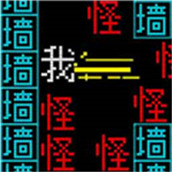最新下载
热门教程
- 1
- 2
- 3
- 4
- 5
- 6
- 7
- 8
- 9
- 10
sql中IN与EXISTS,NOT IN与NOT EXISTS的详细介绍
时间:2022-06-29 08:18:19 编辑:袖梨 来源:一聚教程网
强调下:在含有NULL值的列的时候,就要小心了,not exists与not in在逻辑上是不等价的
--先创建2张表
| 代码如下 | 复制代码 |
|
use master; if db_id('DbTest') is not null drop database DbTest; create database DbTest; use DbTest; --创建Customers表 |
|
--创建Orders表
| 代码如下 | 复制代码 |
|
CREATE TABLE Orders INSERT INTO Customers(custid, companyname,country) |
|
--咱们回到正题,比较Exists与in,not exists与 not in
--查询来自中国,而且下过订单的所有客户
| 代码如下 | 复制代码 |
| select custid,companyname from Customers as C where country=N'中国' and exists (select * from Orders as O where O.custid=C.custid); --返回 --custid companyname --1 大众 --3 奔驰 |
|
--外部查询返回来自中国的客户信息,对于这个客户,exists谓词在Orders表查找是否至少存在一个与外部客户行信息相同的custid订单行
--用IN查询刚刚的需求
| 代码如下 | 复制代码 |
| select custid,companyname from Customers as C where country=N'中国' and custid in(select custid from Orders); |
|
--结果跟上面的返回一样的值
--下面的知识点我们需要认识到:
--当列表中有NULL时,in实际会产生一个UNKNOWN的结果,例如 a in(d,b,null)的结果是UNKNOWN,而a not in (d,b,null)返回的是not unknowd仍然是unknowd
--而not in与not exists则结果会很不同,例如a in(a,b,null)返回的是TRUE,而a not in(a,b,null)返回的肯定是not true即为false
--有了上面的认识,好继续开工了....
--我们现在向Orders表插入一行数据(6,null)
| 代码如下 | 复制代码 |
|
set identity_insert Orders on; insert into Orders(orderid,custid) values(6,null); set identity_insert Orders off; set identity_insert Customers on; insert into Customers(custid,companyname,country) values(7,N'雷克萨斯',N'美国'); set identity_insert Customers off; select * from Orders; |
|
--假设现在要返回来自美国且没有订单的客户
| 代码如下 | 复制代码 |
| select custid,companyname from Customers as C where country=N'美国' and not exists (select * from Orders as O where O.custid=C.custid ); --返回 --custid companyname --7 雷克萨斯 |
|
--我们再用IN方法
| 代码如下 | 复制代码 |
| select custid,companyname from Customers as C where country=N'美国' and custid not in(select custid from Orders); |
|
--返回的结果为空!!!
--为什么呢??
--因为还记得我们刚插入的一行数据中custid为null么,这就是问题所在
--not in (select custid from Orders)返回的实际是unknown,所以返回结果集为空,除非你显示的规定custid不能为空
--下面是正确的解决方法
| 代码如下 | 复制代码 |
| select custid,companyname from Customers as C where country=N'美国' and custid not in (select custid from Orders where custid is not null); --返回 --custid companyname --7 雷克萨斯 |
|
--所以在含有NULL值的列的时候,就要小心了,not exists与not in在逻辑上是不等价的
in适合内外表都很大的情况,exists适合外表结果集很小的情况。
exists 和 in 使用一例
===========================================================
今天市场报告有个sql及慢,运行需要20多分钟,如下:
| 代码如下 | 复制代码 |
| update p_container_decl cd set cd.ANNUL_FLAG='0001',ANNUL_DATE = sysdate where exists( select 1 from ( select tc.decl_no,tc.goods_no from p_transfer_cont tc,P_AFFIRM_DO ad where tc.GOODS_DECL_NO = ad.DECL_NO and ad.DECL_NO = 'sssssssssssssssss' ) a where a.decl_no = cd.decl_no and a.goods_no = cd.goods_no ) |
|
上面涉及的3个表的记录数都不小,均在百万左右。根据这种情况,我想到了前不久看的tom的一篇文章,说的是exists和in的区别,
in 是把外表和那表作hash join,而exists是对外表作loop,每次loop再对那表进行查询。
这样的话,in适合内外表都很大的情况,exists适合外表结果集很小的情况。
而我目前的情况适合用in来作查询,于是我改写了sql,如下:
| 代码如下 | 复制代码 |
| update p_container_decl cd set cd.ANNUL_FLAG='0001',ANNUL_DATE = sysdate where (decl_no,goods_no) in ( select tc.decl_no,tc.goods_no from p_transfer_cont tc,P_AFFIRM_DO ad where tc.GOODS_DECL_NO = ad.DECL_NO and ad.DECL_NO = ‘ssssssssssss’ ) |
|
让市场人员测试,结果运行时间在1分钟内。问题解决了,看来exists和in确实是要根据表的数据量来决定使用。
请注意not in 逻辑上不完全等同于not exists,如果你误用了not in,小心你的程序存在致命的BUG:
请看下面的例子:
| 代码如下 | 复制代码 |
|
create table t1 (c1 number,c2 number); insert into t1 values (1,2); select * from t1 where c2 not in (select c2 from t2); |
|
正如所看到的,not in 出现了不期望的结果集,存在逻辑错误。如果看一下上述两个select语句的执行计划,也会不同。后者使用了hash_aj。
因此,请尽量不要使用not in(它会调用子查询),而尽量使用not exists(它会调用关联子查询)。如果子查询中返回的任意一条记录含有空值,则查询将不返回任何记录,正如上面例子所示。
除非子查询字段有非空限制,这时可以使用not in ,并且也可以通过提示让它使用hasg_aj或merge_aj连接。
接着看
SQL中IN,NOT IN,EXISTS,NOT EXISTS的用法和差别:
IN:确定给定的值是否与子查询或列表中的值相匹配。
IN 关键字使您得以选择与列表中的任意一个值匹配的行。
当要获得居住在 California、Indiana 或 Maryland 州的所有作者的姓名和州的列表时,就需要下列查询:
| 代码如下 | 复制代码 |
| SELECT ProductID, ProductName FROM Northwind.dbo.Products WHERE CategoryID = 1 OR CategoryID = 4 OR CategoryID = 5 |
|
然而,如果使用 IN,少键入一些字符也可以得到同样的结果:
| 代码如下 | 复制代码 |
| SELECT ProductID, ProductName FROM Northwind.dbo.Products WHERE CategoryID IN (1, 4, 5) |
|
IN 关键字之后的项目必须用逗号隔开,并且括在括号中。
下列查询在 titleauthor 表中查找在任一种书中得到的版税少于 50% 的所有作者的 au_id,然后从 authors 表中选择 au_id 与
titleauthor 查询结果匹配的所有作者的姓名:
| 代码如下 | 复制代码 |
| SELECT au_lname, au_fname FROM authors WHERE au_id IN (SELECT au_id FROM titleauthor WHERE royaltyper | |
结果显示有一些作者属于少于 50% 的一类。
NOT IN:通过 NOT IN 关键字引入的子查询也返回一列零值或更多值。
以下查询查找没有出版过商业书籍的出版商的名称。
| 代码如下 | 复制代码 |
| SELECT pub_name FROM publishers WHERE pub_id NOT IN (SELECT pub_id FROM titles WHERE type = 'business') |
|
使用 EXISTS 和 NOT EXISTS 引入的子查询可用于两种集合原理的操作:交集与差集。两个集合的交集包含同时属于两个原集合的所有元素。
差集包含只属于两个集合中的第一个集合的元素。
EXISTS:指定一个子查询,检测行的存在。
本示例所示查询查找由位于以字母 B 开头的城市中的任一出版商出版的书名:
| 代码如下 | 复制代码 |
| SELECT DISTINCT pub_name FROM publishers WHERE EXISTS (SELECT * FROM titles WHERE pub_id = publishers.pub_id AND type = 'business') SELECT distinct pub_name FROM publishers WHERE pub_id IN (SELECT pub_id FROM titles WHERE type = 'business') |
|
两者的区别:
EXISTS:后面可以是整句的查询语句如:SELECT * FROM titles
IN:后面只能是对单列:SELECT pub_id FROM titles
NOT EXISTS:
例如,要查找不出版商业书籍的出版商的名称:
| 代码如下 | 复制代码 |
| SELECT pub_name FROM publishers WHERE NOT EXISTS (SELECT * FROM titles WHERE pub_id = publishers.pub_id AND type = 'business') |
|
下面的查询查找已经不销售的书的名称:
| 代码如下 | 复制代码 |
| SELECT title FROM titles WHERE NOT EXISTS (SELECT title_id FROM sales WHERE title_id = titles.title_id) | |
相关文章
- 暖雪dlc2终业稳定通关套路搭配攻略 12-07
- 绝区零会过期的宝箱任务攻略 12-07
- 魔兽世界怀旧服Plus圣骑士全符文获取攻略 12-07
- 魔兽世界怀旧服Plus制造业紫装制作流程攻略 12-07
- 最终决战downloading failed解决方法 12-07
- 魔兽世界怀旧服Plus山狗巢穴坐标位置分享 12-07














